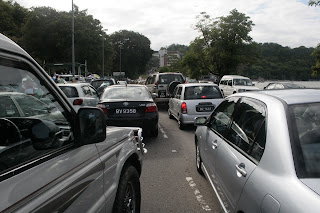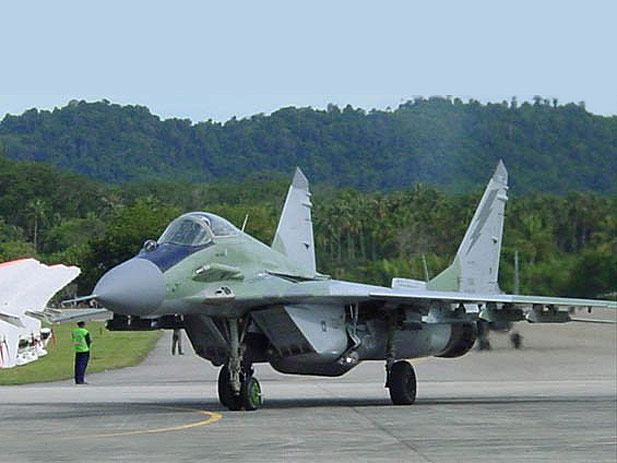Car Prices Still High In Malaysia (the Edge)
DilaDellila
Car buyers had before the National Automotive Policy (NAP) accepted the fact that car prices in Malaysia are one of the few things that always go up and never come down.
Over the past few years, many had hoped that with the Asean Free Trade Area (Afta) being implemented, car prices would drop. They went up instead, dashing the hopes of many.
It is therefore fair to say that prior to the announcement of the NAP last month, many Malaysians would have been quite happy for car prices to remain stable. To see the NAP driving the prices of mainly national cars and locally assembled cars down by up to 10% was an unexpected and pleasant surprise.
Days after the NAP was announced on March 22, Proton Holdings Bhd slashed the prices of its cars by up to 7%. The highest discount in terms of percentage is for the Gen.2 1.6 AT H-Line model with RM4,450 in savings. Perodua also reduced its car prices by 4%.
Locally assembled foreign cars also had their prices trimmed. Volvo Car Malaysia Sdn Bhd dropped its car prices by up to 7%, which translated into savings of about RM10,000 to RM20,000.
So, has the recent reduction significantly closed the car price gap between Malaysia and other countries? Is it just a one-off occurrence or could prices come down further?
The answer for the first question is "no". As for the second one, even industry players with years of experience refuse to predict the trend of car prices.
"The car industry is policy driven, it is hard to predict if car prices will fall further," says Malaysian Automotive Association (MAA) president Datuk Aishah Ahmad.
Nevertheless, she says the fact that the government reduced the duties on national cars and locally assembled foreign cars is a step in the right direction to make cars more affordable to the masses.
"Car prices in Malaysia are not the cheapest," concedes Aishah. "But it [the price reduction] is a good start." Nevertheless, one out six Malaysians can still own a car due to the easy availability of long-term loans, she adds.
However, long-term car loans, some with repayment periods of nine years, could make cars artificially affordable in Malaysia. Any financially prudent individual would tell you that it is not wise to borrow too much money to buy a car, as its resale value always depreciates. Low monthly repayments on car loans could be easily structured by stretching the repayment period.
A better way to assess the affordability of vehicles is by looking at the earning power of the buyers.
According to the World Bank, the gross national income (GNI) per capita of Malaysia in 2005 was US$4,650. This means that an entry-level car, such as the Proton Savvy, costs more than twice the country's per capita GNI. A Perodua Myvi costs nearly three times the average annual income of a Malaysian.
Car prices in countries where the car market is relatively liberalised are generally more affordable. For example, an Australian's five-month income is enough to purchase a Proton Savvy.
Under NAP, prices of non-Asean completely built up (CBU) models remain high. An Audi A4 with a two-litre engine costs US$74,780 in Malaysia. This is about 100% more expensive than the price in Germany at US$37,264. Audi is a German car company. The same car costs US$49,879 in China.
The price gap of a locally assembled German car is equally big. A BMW 525i costs US$108,468 in Malaysia. The same car costs 70% less in the US, 54% less in the UK and 37% less in Australia. However, in Thailand, where taxes on luxury sedans are high, a similar model costs only 6% less.
As for the prices of locally assembled Japanese cars, Malaysia still tops the list. A Malaysian motorist has to fork out US$42,188 to drive a Honda Accord 2.4 litre out of a showroom. In Indonesia, a similar model costs US$40,049 while it is lower in Thailand at US$36,049. Among the four countries, Japan's selling price is the lowest at US$32,493.
Malaysian car buyers appear to benefit the least from cars designed for the Asean market.
A 1.5-litre Vtec Honda City costs US$23,110 in Malaysia and it is US$2,000 cheaper in Indonesia. In Thailand, where the model's main manufacturing plant is located, the car is priced substantially cheaper at US$16,383.
As for a 1.3-litre Toyota Avanza, Malaysia's price is US$16,871 while it is US$14,166 in Thailand. The manufacturing hub of the model is in Indonesia, where it costs the lowest among these countries at US$11,362.
The origin country of a car company usually enjoys the lowest price. For example, a BMW 116i costs only US$25,065 in Germany, compared with US$28,013 in the UK and a whopping US$45,787 in Malaysia.
In Malaysia, however, in some cases, the trend is reversed. A 1.6-litre Proton Gen.2 in Malaysia costs US$16,804. In Australia, it is cheaper at US$14,225 although it comes with more features, such as two air bags and an anti-lock braking system.
A Proton Savvy costs US$10,902 in Malaysia. The better-equipped Australian version is slightly cheaper at US$10,183.
Conclusion:
Our life here is cheaper than Mat Saleh. Those Mat Saleh enjoy a better safety equipped car with cheaper price while our so call national car Proton, Perodua or Naza still giving a substandard quality car to us??pity Malaysian??






















